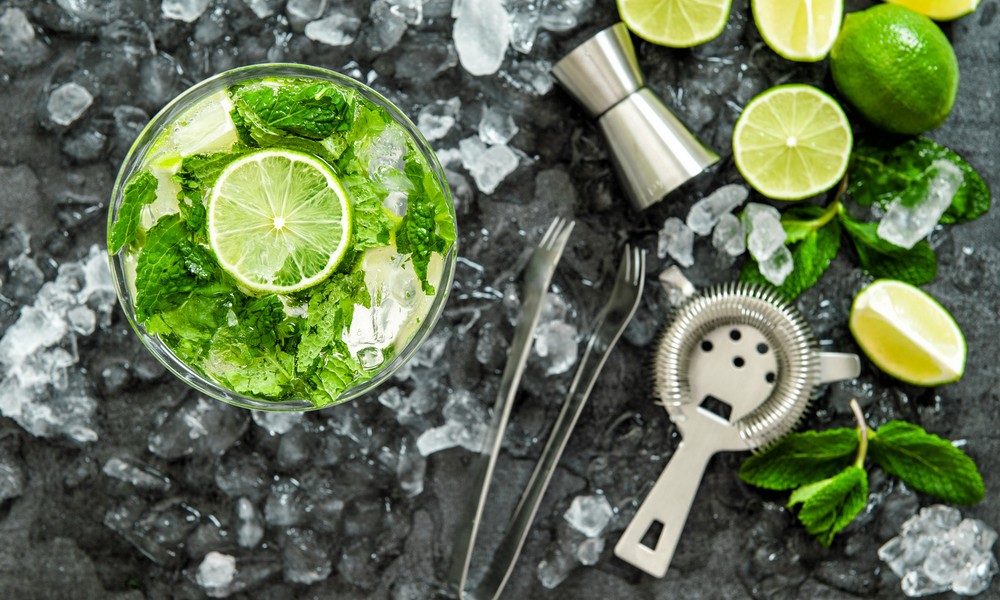
You may not be heading off to bartender school anytime soon, but you may sometimes wonder what it would be like if you could host brunch at home and present your guests with the most killer mimosas. You may also want to occasionally recreate a great cocktail you had at a bar but aren't quite sure how to do so.
If you want to impress your guests (and your own tastebuds!) then read on for this lesson in at-home bartending.
Master the lingo
Knowing terms such as "mixer," "garnish," "dash/splash," "on the rocks," "straight-up," "top-shelf," and the many uses of the term "back" is a great starting point to becoming a homemade bartender. Once you understand that a dash is 1/32 of an ounce—and a number of other bartending terms—you'll be able to accurately measure out and visualize the ingredients that go into making cocktails and mixed drinks.
Know what to stock
Every good bar has a variety of options—even ones at home. Stock your cabinets with liquors and liqueurs (do you know the difference between the two yet?) and a variety of mixers (pineapple juice, tonic, soda water, Coke and Diet Coke, and pre-made margarita mixes are good starts). For your spirits, make sure you have an assortment—light and dark rum, vodka, whiskey, tequila, and gin are all great options. You'll also want a few different types of beer and wine for those who prefer something other than hard liquor.
Have the correct bar gear
Choosing the right glassware can be a complicated (and sometimes confusing) process, but it's one area where your technique book will come in handy. As a baseline, you should have a nice Old Fashioned glass, which is the most versatile kind. Serve anything from whiskey on the rocks to vodka tonics in them. Along with glasses, you'll want to have the right type of cocktail mixers: a cocktail shaker, bar spoon, jigger, and strainer are all wonderful, useful tools that will make a difference.
Pick up some drink-mixing techniques
This guide should help you learn the correct way of shaking cocktails. You should learn the basic techniques of mixing cocktails (such as stirring, straining, blending, and topping off), as well as some more advanced techniques (like rolling, layering, and muddling). A good technique book can be a good investment if you're serious about upping your cocktail game.
Drink presentation
Finally, you'll need to know the best way to present the delicious drink you've no doubt concocted. Using the glassware you've already purchased, you can match the type of drink to the glass: champagne flutes for champagne, wine glasses for wine, pint glasses for beer, etc. If you feel that a drink requires a garnish (such as salt on the rim for a margarita or an olive in a martini), go ahead and add it. Don't be afraid to get creative! Up the ante by chilling glasses in the freezer beforehand or using fresh ingredients instead of pre-made ones—it's the little things that make a difference!
Try out these tips and you'll be on your way to becoming an expert home bartender in no time! Whether you are having friends over for a nightcap or treating yourself to an after-dinner sip, you'll be sure to drum up something that you can be proud of.
We also encourage you to drink responsibly. Consumption of alcohol impairs your ability to drive or operate machinery, so never drink before doing these activities.

